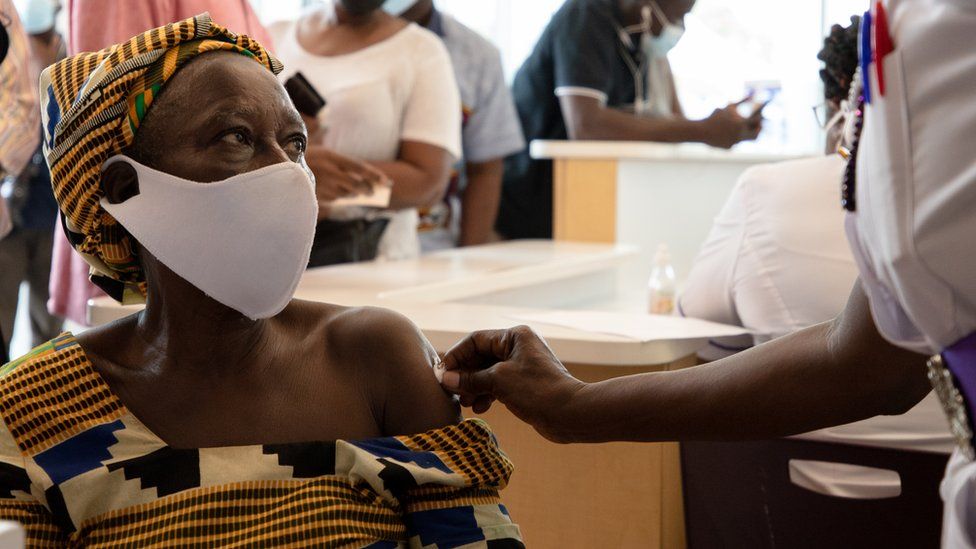The total number of COVID-19 cases in the 55 African countries exceeded five million on Tuesday, June 15. Only 0.79% of the population has been fully vaccinated on this continent of about 1.3 billion people, amounting to 16% of the global population. The first dose has been administered to just 2.37% of the population. This rate of vaccination has already exhausted 70.13% of the continent’s supply, according to the dashboard of the Africa Centres for Disease Control and Prevention (CDC).
Tanzania, Burundi, Eritrea, and the Sahrawi Republic, which is a de facto state struggling for independence from Morocco, have received no vaccines at all. While Burkina Faso has been supplied with 115,200 vaccines, enough to cover 0.28% of the population, it is yet to administer the first one. Another 11 countries on the continent, including the most populous Nigeria, lack sufficient supplies to cover even 1% of their respective populations.
The vaccine roll-out in Africa has been very limited due to hoarding by the wealthier countries and the supply shock since late March when India, which produces about 60% of the global vaccine supply, halted exports as its own population is suffering unprecedentedly in the second wave.
Among the limited number of vaccines that were made available, tens of thousands have gone to waste because many of the doses that were donated by wealthier countries expired as countries with limited infrastructure did not have enough time to administer them.
The bulk of the vaccines have been supplied through COVAX. Launched by the WHO, the European Commission and France in April 2020, COVAX is a platform coordinated by the GAVI, the Coalition for Epidemic Preparedness Innovations (CEPI) and the WHO.
The purpose of this platform is “to ensure the procurement and equitable distribution of COVID-19 vaccines” to all countries. A total of 44 African countries have received vaccines through COVAX. It is the sole source of vaccine supply to 11 countries, including Nigeria. The 3.94 million vaccines supplied to this country under the COVAX program cover only 0.96% of its population.
The total of 167,078 COVID-19 cases registered in Nigeria, which makes it the seventh worst affected African country in absolute numbers, has affected less than 0.08% of its population of over 206.1 million. But official numbers are believed to be a gross underestimation, due to the severe shortage of testing in proportion to the large population in the country.
The 2,231,409 samples tested as on June 15 amount only to 1.05% of its population. This is less than half the continental rate of about 3.6%. South Africa, which is slightly over a quarter the size of Nigeria’s population, has tested five times more, covering about 20% of the population.
The 1,752,630 cases detected in South Africa amount to over a third of the total cases on the continent. The total 3,074,000 vaccines the country has acquired can only fully vaccinate 2.59%. Only 0.57% of the population is fully vaccinated, while 3.16% have received the first dose.
South Africa’s vaccine rollout has been slower than expected. Back in December 2020, South Africa had already paid USD 20.55 million to COVAX, from which it was scheduled to receive about 2.5 million doses of AstraZeneca vaccine by February 2021. However, as a result of supply constraints, the delivery was postponed to May.
By then, following the test results which showed lower efficacy of AstraZeneca on locally prevalent 501Y.V2 variant, South Africa had decided not to roll out the vaccine, which was sent back through COVAX to other countries. South Africa had in the meantime requested an alternative vaccine, and is expecting a delivery of 1,392,000 Pfizer doses though COVAX by the end of June. In the meantime, South Africa has been relying on bilateral procurement of Pfizer and Johnson and Johnson for its vaccination drive.
Following South Africa, Morocco, with a total of 523,999 detected cases, has the second highest numbers of infections in Africa. By diversifying the sources of vaccines between the AstraZeneca vaccine made in India and South Korea, Russia’s Sputnik and China’s Sinopharm, Morocco had a successful vaccine procurement, and has already managed to fully vaccinate 19.23% of the population.
This rate is over twice that of France which is lagging behind in Europe. 25.39% of Morocco’s population has received the first dose. However, this drive too has now come up against a wall. 87.5% of its vaccine supply has been used up.
Tunisia, which is the third most infected with 370,224 total recorded cases, has exhausted over 92% of its vaccine supply, having fully vaccinated only 3.12% of its population. Ethiopia, which has recorded the fourth highest number of cases on the continent with a total of 274,346 positive tests, is yet to fully vaccinate people. Only 1.7% of the population has had the first dose so far.
Amidst this severe shortage of vaccines, “fourteen or so of our member states are now heading toward the third wave, and aggressively so,” said Africa CDC’s director, John Nkengasong, during an online press briefing last week, on June 10. “It really highlights the need for us to roll out vaccines at speed and at scale.”
On the same day, the WHO called for a “massive effort” to secure at least 225 million vaccine doses, which can cater to 10% of Africa’s population, by September.





